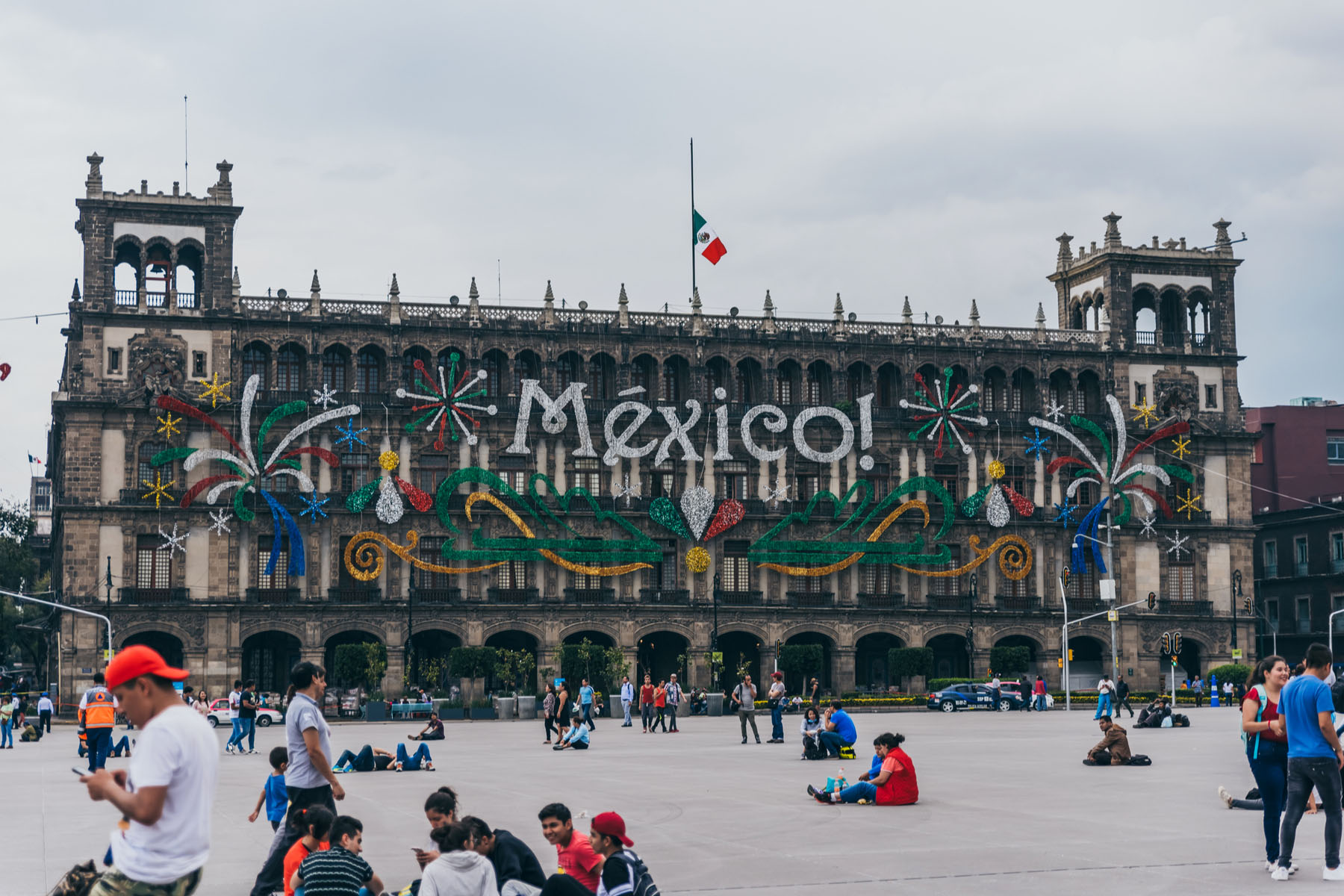Spanish is the official language of Spain, as well as many countries in Latin America, and Equatorial Guinea. It’s also the fourth-most spoken language in the world and is, therefore, a very valuable language to learn. And thankfully, it is also considered to be one of the easiest for English speakers to grasp.
While learning Spanish is part of the fun of moving to Spain, knowing about the history, origins, dialects, and reach of the language enriches the experience. Not only that, but you’ll be able to impress your new friends with your in-depth knowledge.
In this guide, we cover the following topics:
Babbel
Want to brush up on your Spanish before making the move to Spain? Say hola to Babbel! The language-learning app lets you get to grips with Spanish at your own pace. With great resources and professionally-made courses, you'll soon know the words to your favorite reggaeton songs. Download Babbel today and start your Spanish journey.
What languages are spoken in Spain?
According to a 2012 survey, 94% of people in Spain speak Spanish as a native or second language. Meanwhile, 12% of people claim to speak English, and most of them are under 55. So while you will probably encounter some English speakers in the country who can help you out, it’s a good idea to learn the Spanish language.

What we call ‘Spanish’ is often described as Castilian Spanish (Castellano), which originated in northern Spain and was primarily used in the Kingdom of Castile (Reino de Castilla). There are other languages in Spain, too, which we will explore below.
Basque (Euskara)
This language is unrelated to any other living language, so learning it is an exciting challenge. About 35% of the Basque population, who live in the Pyrenees in northern Spain and southwestern France, can speak Basque.
Catalan or Valencian (Català or Valencià)
Some might question whether Català and Valencià are the same languages, but the Valencian Academy of Languages (Acadèmia Valenciana de la Llengua) says that this is the case. Between 75 and 90% of people in Catalonia, Valencia, and the Balearic Islands speak it.
While speaking Spanish might help you understand some words in Catalan, the language is actually more closely related to French and Italian.
Galician (Galego)
Galician is quite similar to Portuguese. This is perhaps not surprising given that Galicia borders Portugal. The language is spoken by 40% of Galicians and by people in parts of Asturias and Castile and León.
Other unofficial languages
Spain is also home to other minority and unofficial languages and dialects, such as Aranese, Cantabrian, Extremaduran, Aragonese, and Asturian.
Where Spanish is spoken worldwide
Spanish is a global language, there are almost 489 million native Spanish language speakers in the world. Among both native and non-native speakers, it’s the fourth most commonly spoken language worldwide. Spanish is also the third most commonly used language on the internet, after Mandarin and English. In addition, there are 585 million ‘potential users’ of Spanish – that’s 7.5% of the world’s population. Furthermore, 22 million people study Spanish as a foreign language.
Spanish is spoken in Spain, of course, and is an official language in many countries in Latin America as well as Equatorial Guinea. Of the 19 other countries that have Spanish as an official language, Mexico is home to the largest population of Spanish speakers, which amounts to over 120 million.

In addition, there are 41 million Spanish speakers in the US and 1.4 million in the European Union outside of Spain. Many people in Andorra, Belize, and Gibraltar also speak Spanish. As a result, you are bound to encounter a multitude of different Spanish accents and dialects around the world.
Origins and history of the Spanish language
Spanish is a Romance language, which evolved from Latin. Other Romance languages include Italian, French, Romanian, and Portuguese. Historically, Arabic also influenced the Spanish language, as a result of Muslim rule in the eighth to 15th centuries.
The language was first standardized in 1492, and Spanish colonization brought it to the Americas. Latin American Spanish is thought to have been influenced by Andalusians who moved there.
Pronunciation and phonology
Similar to English, Spanish uses the Latin alphabet, and letters almost entirely correspond with their pronunciation.
There are five vowels in Spanish, as follows:
- a – like ‘a’ in ‘cat’
- e – like ‘e’ in ‘bet’
- i – between ‘i’ in ‘kit’ and ‘ee’ in ‘feet’
- o – like ‘o’ in ‘lot’ but slightly shorter
- u – like ‘oo’ in ‘boot’ but further back in the mouth
These vowels can go together to make other sounds; for example, in the word hoy (pronounced ‘oy’), which means ‘today’. Also, look out for vowel combinations that begin in i or u as they make what sounds like ‘y’ or ‘w’ in English. For example, fuego (fire) sounds like ‘fwego’ and tierra (Earth) sounds like ‘tyerra’.

You will notice that many Spanish language words have accents, such as sábado. These show where to stress the word, so you say ‘SA-bado’. Most Spanish words have their stress on the second-to-last syllable but have an accent when this is not the case.
Many consonants in Spanish are similar to their English counterparts. However, there are plenty of exceptions, such as the ones below.
How to treat consonants in Spanish
- c and z: these sometimes make the sound ‘th’ like in ‘think’ in some dialects of Spanish
- g and j: before e or i, these make a ‘ch’ sound like in ‘loch’
- h: usually silent in Spanish
- ll: this letter combination can make a ‘y’ a ‘j’ or a ‘sh’ sound, depending on which dialect of Spanish you speak
- ñ: the little wiggle over the n is a tilde and shows that you should add a ‘y’ sound after it; this stands as a separate letter in the Spanish alphabet
- q: in Spanish, this makes a ‘k’ sound
- r and rr: pronounce a single r by tapping your tongue on the palate behind your teeth once. To pronounce rr, touch it more than once; this is called ‘rolling your rs‘.
- v and b: both sound like the ‘b’ in bed
Spanish grammar
In Spanish, nouns (words for people, places, and things) have two genders: masculine and feminine. Of course, there are plenty of exceptions, but a good general rule to follow is that most feminine nouns end in a, and most masculine nouns end in o.
Nouns in Spanish
The words for ‘the’ and ‘a’ also show whether a noun is masculine or feminine, singular or plural:
- una manzana – an apple
- un niño – a child
- la guitarra – the guitar
- el plátano – the banana

Some other feminine word endings include –ión, –d, and –z. For example, la canción (song), la salud (health), and la paz (peace). There are also some nouns ending in –a that are masculine, like el mapa (map).
Spanish verbs and tenses
Spanish verbs, or action words like ‘run,’ ‘eat,’ and ‘sleep’, are perhaps one of the trickiest parts of Spanish grammar. This is because the end of the verb changes to show who takes the action and when. In fact, there are 14 different verb tenses which can make learning them a little overwhelming.
However, the main thing you need to know is what tense you need, and this relates to when an action happens. Similar to English, there are several ways to talk about the past, present, and future in Spanish. Verbs fall into three categories: those ending in –ar, –er, and –ir.
Understanding how Spanish tenses work can be daunting at first, especially as some have very similar meanings and different usages depending on which country they are spoken in.
Sentence structure
Spanish word order is very similar to that of English and follows a subject-verb-object pattern. This means that the person doing the action comes at the start of the sentence, the action comes next, and the person they do the action to comes last.
This might sound confusing, so here is an example:
Maria quiere una manzana = Maria wants an apple
Word for word, the sentence is exactly the same.
Questions in Spanish are also straightforward, and when spoken, come with an upward inflection at the end. And when written, they come with a question mark. Below is an example.
¿Quieres leche? = Do you want milk?
However, it is more common to swap the subject with the verb in a sentence, for example:
Maria quiere una manzana = Maria wants an apple
¿Quiere Maria una manzana? = Does Maria want an apple?

You can also ask questions by using a question word, such as ¿cómo? (how?), ¿cuál? (which/what?), ¿cuándo? (when?), ¿dónde? (where?), or ¿qué? (what?). Note that all question words in Spanish have an accent. And when you use one of these, the subject comes after the verb:
¿Qué quiere Maria? = What does Maria want?
¿Dónde está la biblioteca? = Where is the library?
Here are some useful example phrases for when you move to Spain:
- ¡Hola! – Hello!
- ¿Qué tal? – How are you?
- ¿Cómo te llamas? – What’s your name?
- Me llamo Maria – My name is Maria
- Mucho gusto – nice to meet you
- Por favor – please
- Gracias – thank you
- Lo siento – sorry
- Disculpa – excuse me
- ¿Dónde está el baño? – Where is the bathroom?
- Te quiero – I love you
Formal and informal Spanish
Spanish has two levels of politeness, depending on whether you know someone well or not. You use tú for someone you know, vosotros for lots of people you know, usted to address someone you don’t know, and ustedes to address a group of people politely.
These different forms of ‘you’ also determine the verb ending you use:
- Tú hablas – you (one person, informal) speak
- Usted habla – you (one person, formal) speak
- Vosotros habláis – you (plural, informal) speak
- Ustedes hablan – you (plural, formal) speak
Spanish dialects
There are several differences between Spanish in different regions of Spain and across the Americas. One of them is pronunciation. For instance, in northern Spain, c and z sound like ‘th’ in ‘think.’ However, in Spanish-speaking America, the Canary Islands, and parts of Andalusia, they are pronounced the same as ‘s’. In the very south of Andalusia, meanwhile, c, z, and s are pronounced with a slight ‘th’ sound.
The way people address ‘you’ is also different. There are four forms of you in Spain, depending on politeness and how many people you are speaking to. These are tú, usted, vosotros, and ustedes. In Spanish-speaking America, some parts of western Andalusia, and the Canary Islands, vosotros is not used at all, and they use ustedes for all forms of plural ‘you’. However, some countries use vos instead of tú which comes with different verb endings. This is the case in most of Central America, Argentina, Paraguay, Uruguay, and some parts of Mexico, Bolivia, and Chile.
Different vocabulary
If you’re learning Spanish in Spain, bear in mind that there are many differences in the words you will use. For example, depending on where you are, a cake might be called a pastel, torta, dulce, tarta, queque, or a bizcocho.

Although this is quite an innocent example, it is actually possible to offend people if you use the wrong word, so be careful of this. For instance, in Argentina, the Castilian Spanish word for shell translates locally as a female body part!
Latin American Spanish is also influenced by indigenous languages. For example, aguacate or ‘avocado’ has its roots in the Nahuatl word ahuacatl.
Interesting facts about the Spanish language
- Laughing in Spanish: While English speakers might spell their laugh ‘haha,’ in Spanish, it’s written jajaja; h is usually silent in Spanish, but j is closer to the sound we make when laughing.
- Upside-down question marks and exclamation marks: You can see this in the phrase ¿Cómo te llamas? (What’s your name?). These just show where the question or exclamation begins and ends. Other languages that use them include Galician and Asturian.
- Arabic influence: Many words in Spain have Arabic roots; for example, alcohol (also ‘alcohol’ in English) comes from the Arabic al-kohol.
Learning Spanish
If you’re thinking about moving to Spain, learning Spanish is a great way to get settled in. It can make your new life abroad a lot easier: from sorting visas to finding a job, to stepping onto the Spanish dating scene. Of course, being able to speak Spanish is also a requirement if you want to gain citizenship.

According to the Instituto Cervantes, there are more than 22 million learners of Spanish worldwide, 907,000 of which reside in Spain. This just goes to show that there are many ways to learn Spanish, whether you’re already in Spain or getting ready to move there.
Some simple ways to get started include downloading apps such as and learning on the go. Useful ones include:
However, if real-life classes are more your thing, Spain has many government-subsidized Spanish classes and private language centers that you can attend. For more information on what you should be downloading for your new life in Spain, read our guide to the top 10 must-have Spanish apps.
Useful resources
- Instituto Cervantes – a public institution for promoting the Spanish language
- Real Academia Española – founded in 1713, the Royal Spanish Academy studies the Spanish language and shares information about it
- Ensenañzas de Idiomas (Madrid) – provides information about learning languages in Madrid









